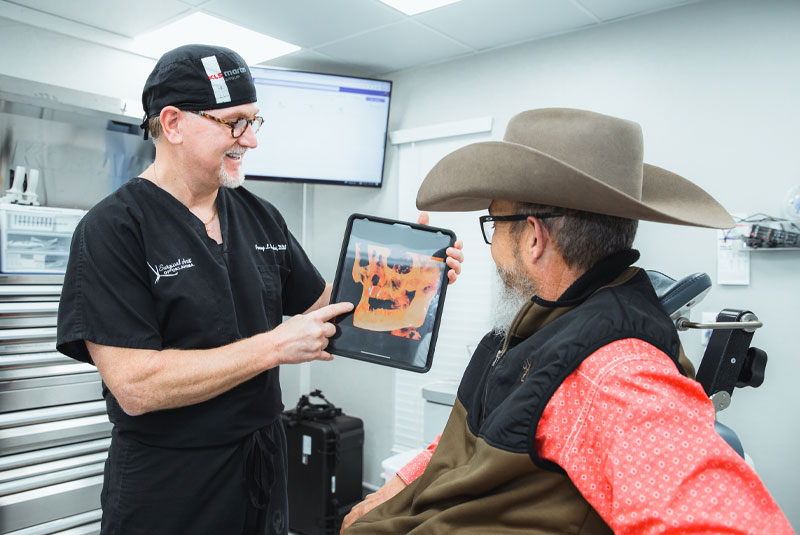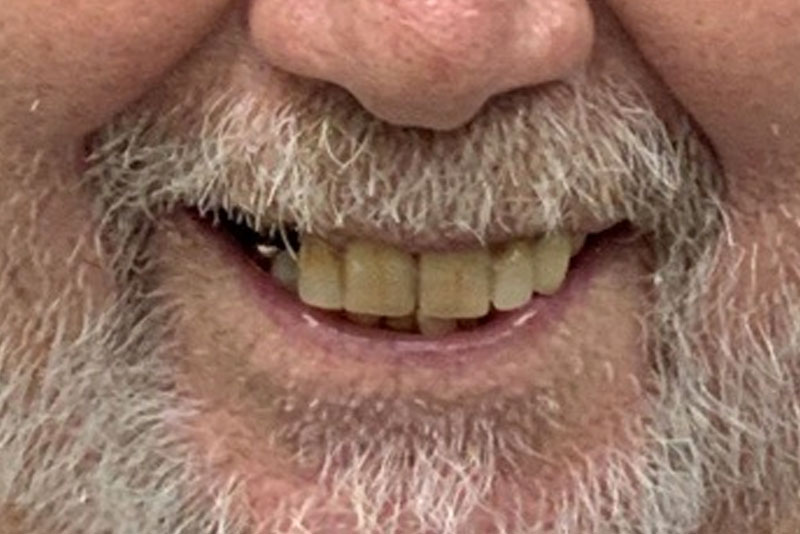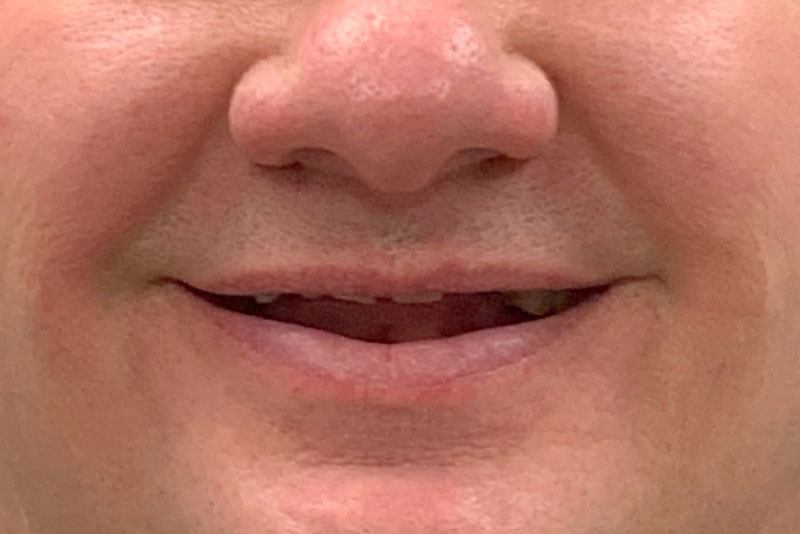Zygomatic Dental Implants
Zygomatic Implants Restore Smiles
with Severe Bone Loss


Cutting-Edge Implant Solutions for Complex Cases
Due to extensive loss of bone volume, height and width in the maxillary (upper) jaw, some patients aren’t candidates for dental implants placed in the jawbone.
Zygomatic dental implants are often an ideal solution for patients with severe upper jawbone loss who don’t qualify for conventional dental implants. Placement of zygomatic implants requires extensive surgical training and experience and meticulous diagnostic planning because of the long drilling distance to the zygomatic (cheek) bone and critical adjacent anatomical structures. The highly skilled board-certified oral surgeons at Rain Dental Implant Centers are among an elite number of implant surgeons in the U.S. who offer these specialized dental implants.
If you’ve been told by another practice that you aren’t a candidate for dental implants, our oral surgeons will help determine if this innovative solution is a good option based on your oral health and anatomy. If you qualify, these implants will transform your smile function and beauty and dramatically improve your quality of life!
The Proof Is In Our Patients







What You Need to Know About Zygomatic Dental Implants
When the jawbone height in the upper jaw is less than 10 mm (vertical height), bone grafting is required to stabilize the implants and increase the likelihood of long-term survival. Dr. Per-Ingvar Brånemark developed zygomatic implants in the late 1980s and Nobel Biocare™ began commercial production of zygomatic implants in the U.S. in 1998. Prior to this, bone grafting procedures were the only solution to restore adequate bone volume in the maxillary jaw and this wasn’t always successful.
While conventional dental implants are secured in the jawbone, zygomatic dental implants are surgically placed in the zygomatic bone. Zygomatic implants are significantly longer than normal dental implants (30–60mm vs. 6–16mm) because the distance to the cheekbone is much longer.
When placed by experienced implant surgeons, zygomatic implants are a proven, predictable and safe restorative treatment. A recent study concluded that zygomatic implants had a cumulative success rate of 96.1% after more than five years, which is just slightly lower than conventional dental implants.


Benefits of Zygomatic Implants
- No need for major bone grafting
- Secure, natural-looking bridge of teeth
- Excellent stability for long-term function
- Reduces timeline for upper jaw restoration
- Eliminates need for upper denture
- Immediate teeth, in most cases
Experience Rain Dental
Implant Centers Difference
Are You A Candidate For Dental Implants?

Dr. Brooks Talks About Dental Implant Disasters
The Zygomatic Implant Process
During your consultation, we’ll ask you about your dental and medical history and perform an oral exam to ensure you’re an appropriate candidate for this procedure. Cone-beam computed tomography is used during your preoperative evaluation to obtain an estimate for implant sizes, evaluate your underlying bone and sinuses and plan accurate placement.
One or two zygomatic implants are used on each side in addition to two to four regular implants towards the front of the jaw to replace the missing roots of the upper front teeth. The extra-long implants are placed from inside the mouth near the location of your bicuspid teeth (fourth and fifth teeth from the center of the mouth to the back of the mouth). Anchoring implants in the strong zygomatic bone enables using an immediate-load protocol, thereby dramatically shortening the time it takes to receive a final restoration.
Although this process may sound more invasive than traditional implant surgery, zygomatic implants can be placed in one surgical procedure under IV sedation or general anesthesia.





